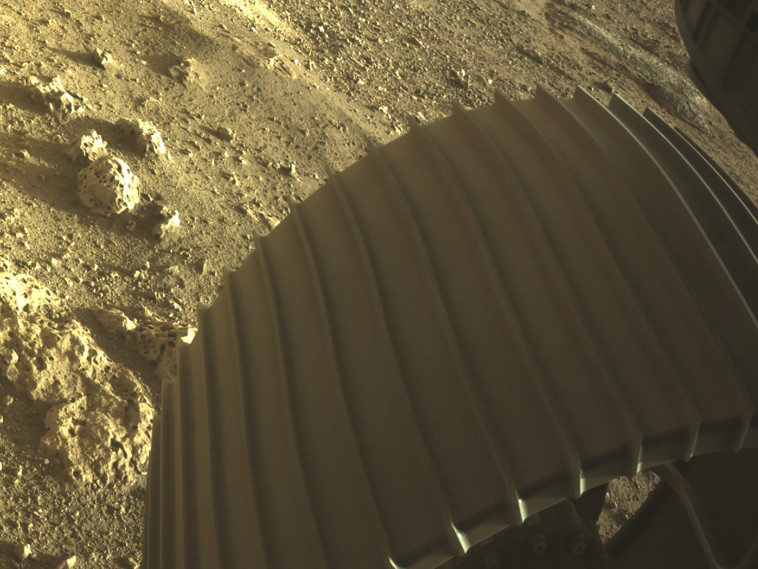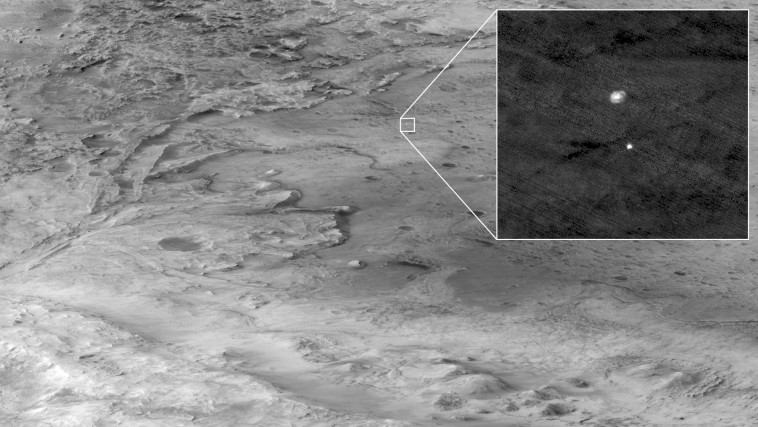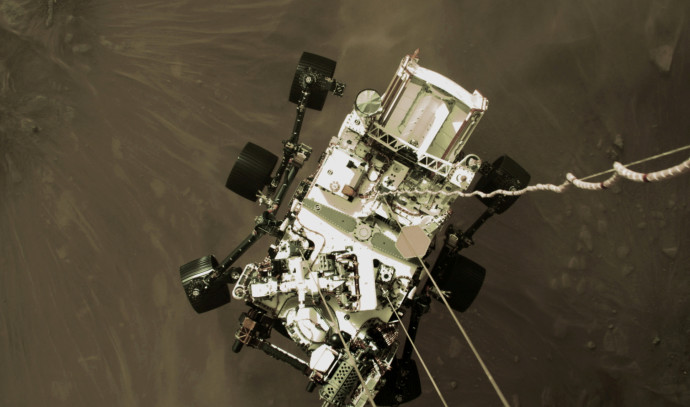NASA released first images taken by the Perseverance (“Perseverance”) spacecraft that landed on Mars Thursday night, including a “selfie” of the six-wheeled vehicle while in the air above the surface of the red planet, just before it touched the ground.
The photo, which immediately became one of the most memorable photos in the history of space exploration, is one of several photos that the lander has sent to the mission team less than 24 hours since landing, and more documentation, videos – some of them with audio – are expected to be taken by all six cameras. The spacecraft is descending, and will also document the dramatic landing moments.
 Martian soil from the Preservation lander camera (Photo: NASA / JPL-Caltech / Handout via REUTERS)
Martian soil from the Preservation lander camera (Photo: NASA / JPL-Caltech / Handout via REUTERS) Mars from the Preservation lander camera (Photo: NASA / JPL-Caltech / Handout via REUTERS)
Mars from the Preservation lander camera (Photo: NASA / JPL-Caltech / Handout via REUTERS)- 2021 Elections: All the polls, articles and interpretations of leading reporters on the Maariv website
The lander image is such a close-up photograph of a spacecraft landing on Mars, or any planet beyond Earth. This is thanks to a camera that provided a shooting angle that was not possible in previous missions. “This moment is a moment we have been dreaming about for years, and now it has become a reality,” Preservers’ Twitter account read, “Dare to realize great things.”
The image, which looks down on the Rover, was taken with a camera mounted on the crane that assisted in the landing stage of the lander, and the vehicle can be seen hanging from three cables connecting it to the crane. Dust vortices caused by crane activity can also be seen. In another image, dust grains from Martian soil can be seen flying as the lander lands. Another color image taken moments after the Rover’s arrival shows a rocky area of space around the landing site and what appear to be cliffs in the distance.
 Image from the moment of lander landing on Mars (Photo: NASA / JPL-Caltech / Handout via REUTERS)
Image from the moment of lander landing on Mars (Photo: NASA / JPL-Caltech / Handout via REUTERS)“It’s something we’ve never seen before,” said Aaron Stora, deputy head of the mission’s take-off and landing team, describing himself and his colleagues as “surprised” when they first saw the picture. Pauline Hwang, strategic mission manager, said the spacecraft “works superbly, properly and healthily across Mars, and continues to be efficient and amazing.”
“The crew is excited and happy with the landing of another spacecraft on Mars,” said Adam Stelzner, the team’s chief engineer, who said he found the image immediately and even compared it to a photo of astronaut Apollo 11 Buzz Aldrin first walking on the moon in 1969, or photos of The Voyager 1 spacecraft on Jupiter in 1980. “The investment in such a project is for us a tribute to humanity,” he said.
The image was taken at the end of the so-called “Seven Minutes of Horror” landing sequence, which brought the lander from the heights of Mars at 12,000 miles per hour, to a soft landing on a huge crater floor called the Gizro Crater, about two miles high cliffs at the base of an ancient river. Billions of years ago, when Mars was warmer, more humid and had conditions that were more likely to allow life.
This is one of the boldest robotic maneuvers in NASA history, as part of a rather ambitious mission – to test whether there is life on the red planet. The lander is NASA’s fifth tool to do so. Along with it also landed a sophisticated robotic miniature helicopter adapted to Mars, “Ingenuity”, and together these are supposed to look for signs of life on the planet, and later send samples back to Earth.
Scientists say the site is ideal for the main purpose of the lander – a search for fossil traces of microbial life preserved in sediment preserved around the delta and the lake it created, which has long since disappeared. Rock samples drilled from Mars will be stored on the surface and returned to Earth by two future robotic missions expected to reach Mars in 2031.
According to Wang, the mission’s field team will spend the next few days and weeks disassembling, deploying and testing the vehicle’s robot arm, communication antennas and other equipment, aligning devices and upgrading the lander software. She added that it would take about nine “soles”, or days of Mars, before the Rover was ready for its first test run.
